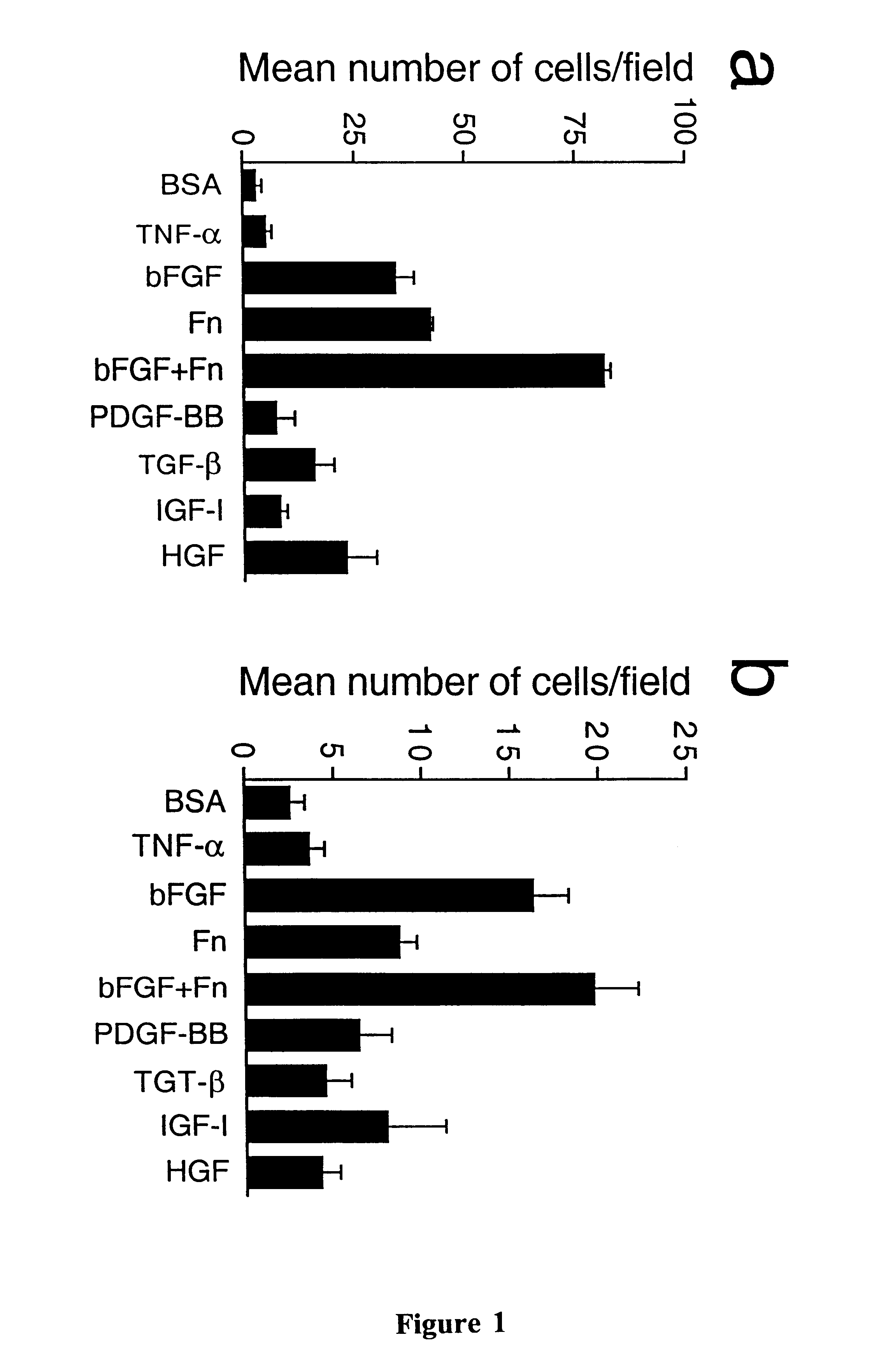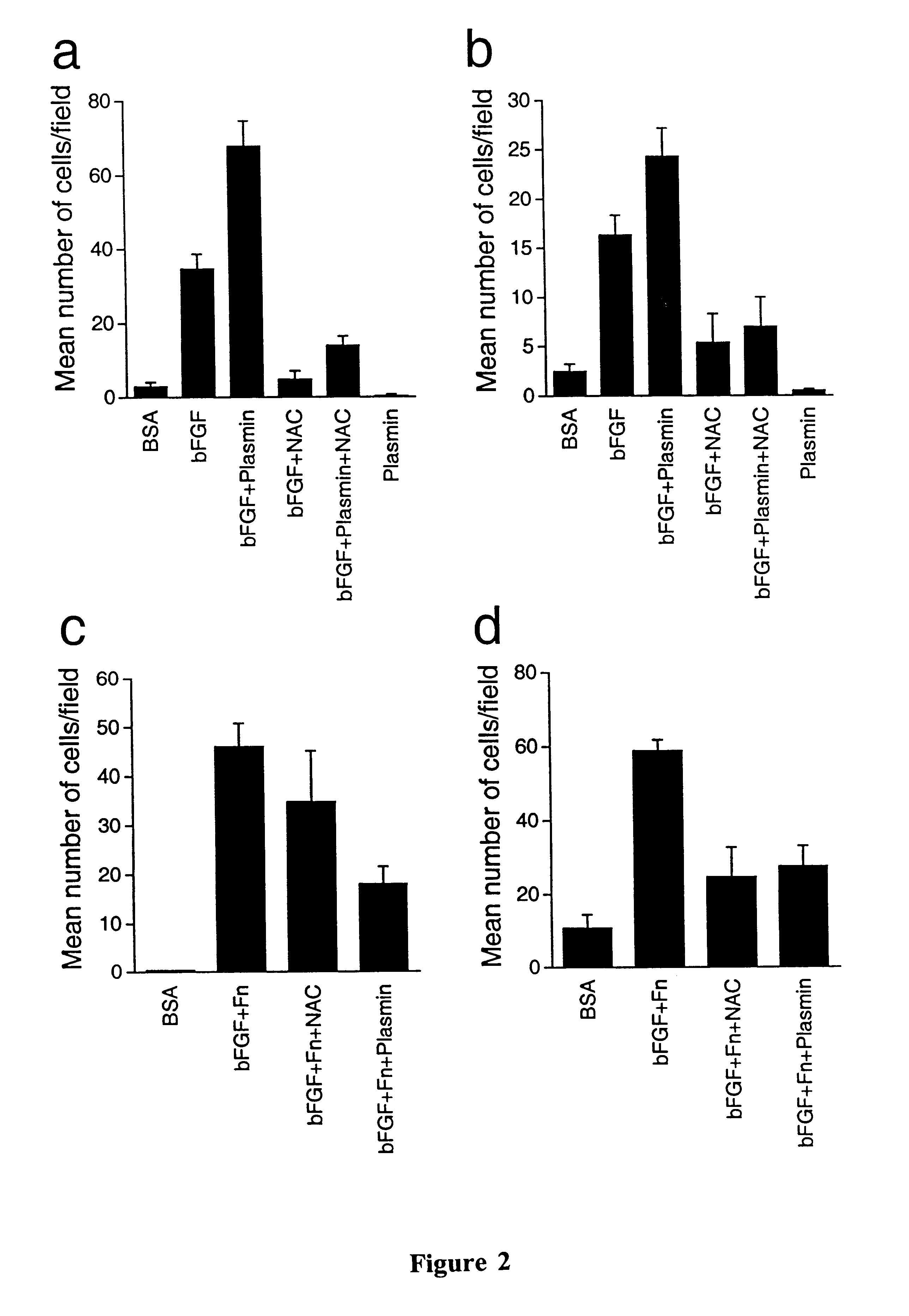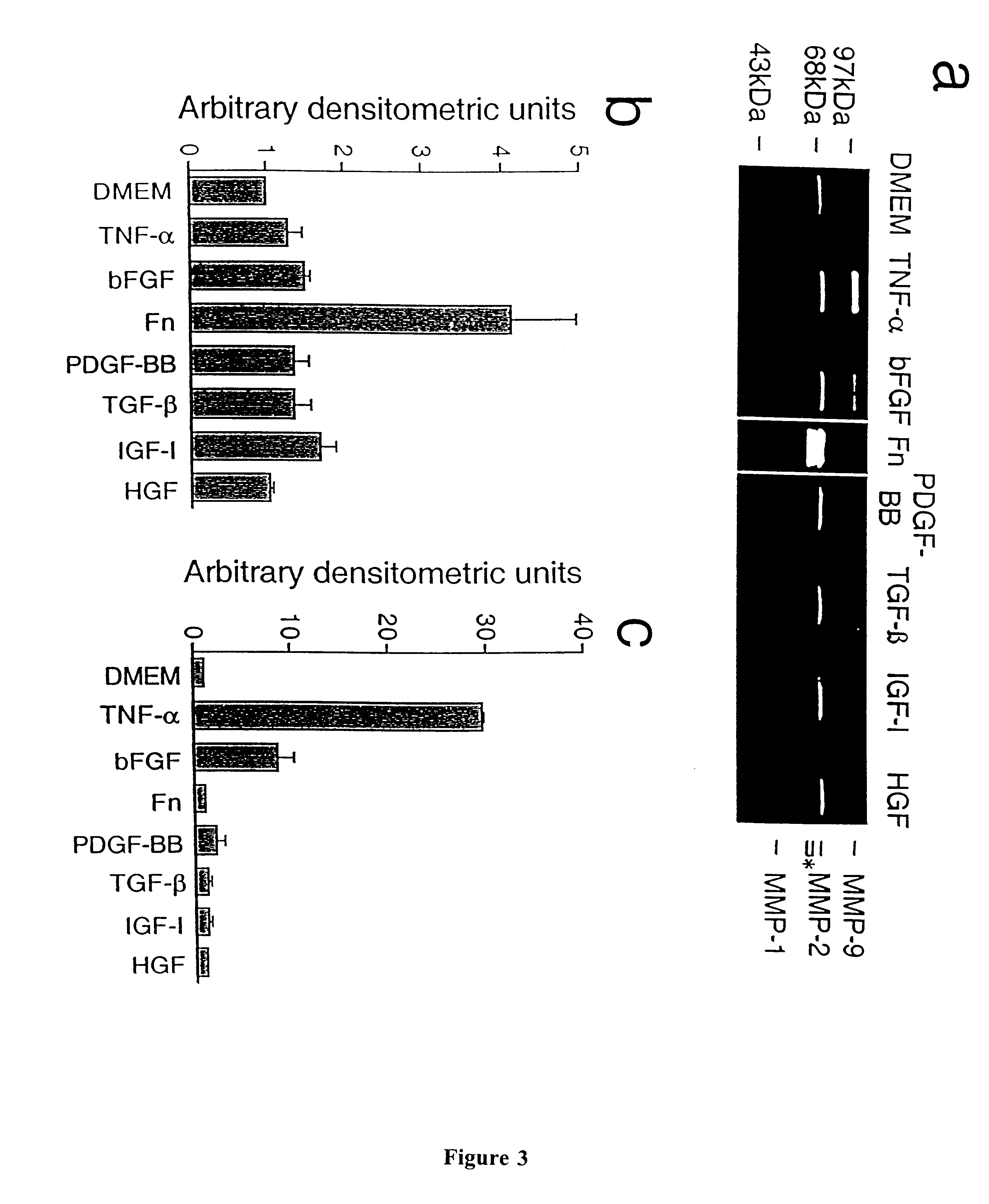Method for enhancing myoblast migration and invasion in the context of gene therapy
a technology of myoblast migration and invasion, applied in the field of gene therapy, can solve the problems of unclear ability of bfgf to be of any use in modulating the migration and transplantation of myoblasts, limited knowledge available on the basic biology underlying the fate of implanted myoblasts, etc., and achieve the effect of enhancing the migration and invasion of myoblasts and greater consistency
- Summary
- Abstract
- Description
- Claims
- Application Information
AI Technical Summary
Benefits of technology
Problems solved by technology
Method used
Image
Examples
example ii
Zymography Analysis of Mouse Myoblasts
The effects of growth factors and fibronectin on MMP expression by mouse myoblasts are shown in FIG. 3a. Mouse myoblasts grown in serum-free medium constitutively expressed MMP-2 (zymogen form, 72kDa), which still appears as a zymogram band due to its inherent gelatinase activity (Reich et al. "Effects of inhibitors of plasminogen activator, serine proteinases and collagenase IV on the invasion of basement membranes by metastatic cells" Cancer Research 48:3307-3312, 1998) (FIG. 3). Proteolytic degradation of gelatin due to MMPs appears as clear bands against the dark background. Bands marked with an asterisk (64 and 62 kDa) indicate the activated forms of MMP-2. The lane for fibronectin treatment was run simultaneously on a separate gel, and the scanned picture is placed in the order for comparison. Treatment of mouse myoblasts with bFGF, PDGF-BB, TGF-.beta. and IGF-I had modest but consistent effects on total MMP-2 expression, increasing its ex...
example iii
MMP Over-expression and Mouse Myoblast Migration and Invasion
Transient over-expression of MMP-1, MMP-2, and MMP-9 was tested in myoblasts to determine whether expression of individual MMPs was sufficient to produce increased migration and / or invasion. Transient transfection rather than stable transduction was used, because secretion of over-expressed MMPs by transfected cells (approximately 20-25% of the cells) should be sufficient to allow most, if not all, cells access to increased levels of secreted MMPs and avoid prolonged exposure of cells to over-expressed MMPs. Successful transfection of MMP-1, MMP-2 and MMP-9 were confirmed by gelatin zymography, showing dramatically increased intensity of bands of approximately 57, 72 and 92 kDa (human MMP-9 is smaller than the mouse counterpart), respectively (FIG. 5a), and by Northern blot analyses (FIG. 5b, c, and d) of the transfected cells. The high molecular weight bands within the bracketed region marked with + presumably represent c...
example iv
Human Myoblast Migration, Invasion and MMP Expression
The effects of growth factors on human myoblast migration in vitro (12 hour time point) were somewhat different from those observed with mouse myoblasts. All the growth factors tested showed substantial stimulatory effects over the BSA control, ranging from 20-100-fold. The greatly elevated level of migration of human myoblasts was due in part to the extremely low migration in the BSA control (basal level) of human cells compared to mouse cells. The largest effects on human myoblast migration were produced by fibronectin (100-fold), PDGF (about 62-fold), TGF-.beta. (about 54-fold) and HGF (46-fold) over the control level, while bFGF produced only a 37-fold stimulation (FIG. 7a). Moreover, unlike mouse myoblasts, the combination of fibronectin and bFGF produced approximately the same effects as fibronectin alone. These effects were significantly increased by plasmin treatment, and greatly reduced by NAC (FIG. 7c), indicating the cr...
PUM
| Property | Measurement | Unit |
|---|---|---|
| concentrations | aaaaa | aaaaa |
| concentrations | aaaaa | aaaaa |
| pH | aaaaa | aaaaa |
Abstract
Description
Claims
Application Information
 Login to view more
Login to view more - R&D Engineer
- R&D Manager
- IP Professional
- Industry Leading Data Capabilities
- Powerful AI technology
- Patent DNA Extraction
Browse by: Latest US Patents, China's latest patents, Technical Efficacy Thesaurus, Application Domain, Technology Topic.
© 2024 PatSnap. All rights reserved.Legal|Privacy policy|Modern Slavery Act Transparency Statement|Sitemap



